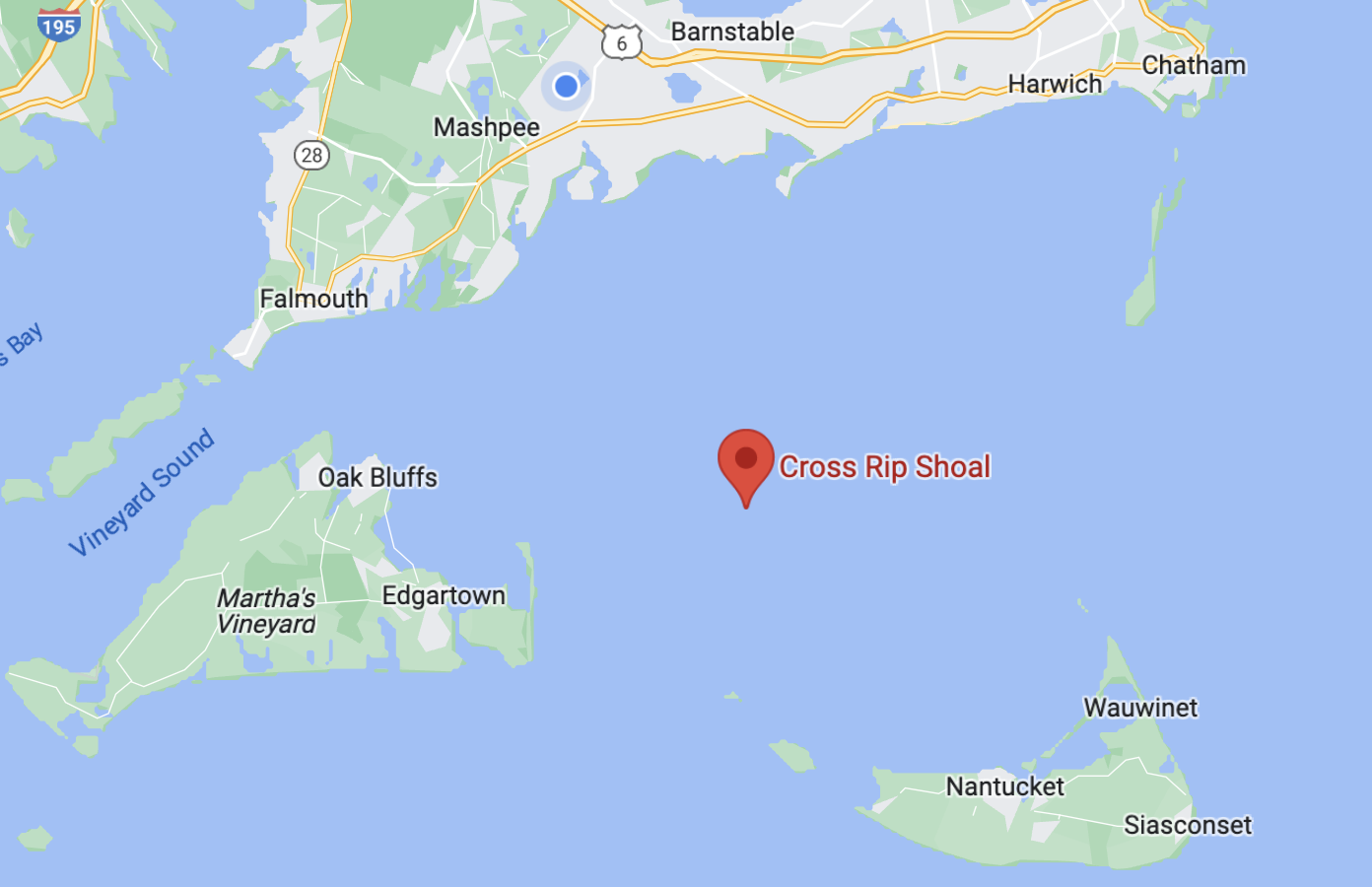It was in February 1918 that the Cross Rip Lightship vanished.
Cross Rip was one of the oldest lightships in the fleet, built in 1855 of oak, 80 feet long with a 24 foot beam, or width. She started life as a schooner, though her masts were later removed in 1914 so a steel skeleton light structure could be added. She was originally placed at Succonnessett Shoal, but moved in 1915 to Cross Rip, a shoal located in Nantucket Sound between and north of Martha’s Vineyard and Nantucket.
The first lightships were established as early as 1820 and it’s estimated that close to 180 were built and positioned throughout the US during the 19th and 20th centuries. Lightship duty could be boring most of the time and terrifying at others. Moored and anchored to the seabed, the ships sat during all kinds of weather in order to provide a navigational aid near sandbars, reefs and dangerous shoals; places where lighthouses could not be built. This meant they could be sitting ducks during heavy gales and some broke free of their moorings, while others provided a safe haven to ships and passengers in distress. Occasionally a lightship was struck or rammed by another vessel, particularly during heavy fog.
Provisioning and crew changes were handled by “tenders” - vessels that came on a schedule to provide the service. The lightships had a captain, mate, cook and crew who rotated on and off duty. Pay was generally good and daily work included maintenance and upkeep of the ship, manning a fog horn, keeping watch and most importantly, maintaining the light. Off time was spent reading, playing games, or crafting models, scrimshaw, baskets and toys. Tourists going back and forth to Nantucket passed the Cross Rip and waved to the crew. It was a familiar site.
The winter of 1918 was a particularly hard one and bitterly cold. Unusual even in that time, ice had packed harbors and Nantucket Sound. In late January the captain of Cross Rip, Richard E. B. Phillips, was ashore on leave, and mate Henry Joy was in charge. He became so concerned about the conditions it was reported that he walked 7 miles across the sea ice to Nantucket, asking there if his crew could abandon ship. He was told no, and to return to duty. He walked back to the ship and joined the rest of his crew : Frank Johnson (South Yarmouth), William Rose (Harwich), Arthur Joy, Bert Phillips and Almond Wixon (all of Dennis).
Around February 4th the ship broke free of her mooring and anchors and began to drift with the pack ice in a southeasterly direction. The crew was helpless. They had no sails, no power to maneuver the boat, no way to break free of the ice and no radio to call for help. On February 5th the lighthouse keeper at Great Point Lighthouse on Nantucket sighted the ship floating past, the ship’s ensign, or flag, flying upside down in what is recognized as a distress signal. It is now believed pressure from the ice had weakened the seams of the ship and she was likely taking on water when seen.
The ship drifted from sight and disappeared. The lightship tender, Azalea, and other naval vessels were dispatched to search for her but she was never located. For a brief time some hoped she was merely adrift with plenty of provisions and would soon be found, but in March the schooner Kineo was fishing off George’s Bank and found a splintered rudder with “Cross Rip” burned into it and a sodden flag nearby. At that point the crew was given up for lost.
There was an outcry of criticism in the newspapers for leaving these sailors in such a dire situation. The Nantucket Inquirer and Mirror stated, “She had no power, no masts, no sails - nothing except a piece of a jib which could be rigged to the forward stay; nothing with which to help herself when she broke adrift and assist on keeping on a course or working her way back to the coast.” She also had no means to communicate. It was widely recognized as a tragedy.
Over the years pieces of the ship were reportedly found. Government dredge W. L. Marshall found parts of the frame and windlass in 1933, and some wreckage exposed in West Dennis in 1957 was thought to be part of the ship, but not confirmed.
The families grieved, widows were compensated, and soon a new lightship was named Cross Rip and posted along the shoal to replace her.
The family of Gilbert (“Bert”) Phillips erected a gravestone to his memory in Yarmouth Port, recently cleaned by members of Friends of Ancient Cemetery. It is one of the few reminders left of this tragic event.
Gilbert H. Phillips, born Jan. 27, 1862, lost at sea Feb. 5, 1918
Researched and written by Nancy Mumford.





